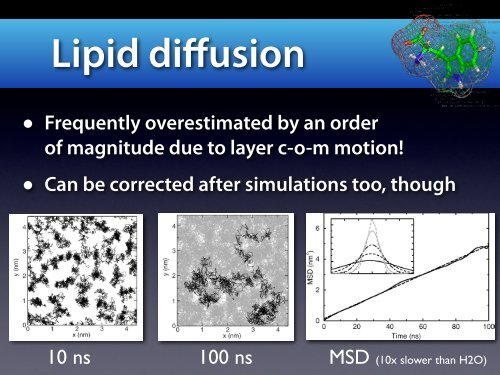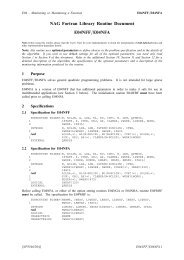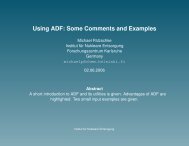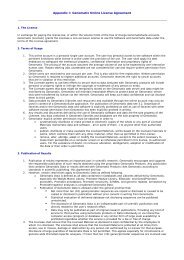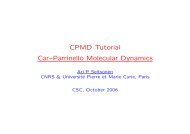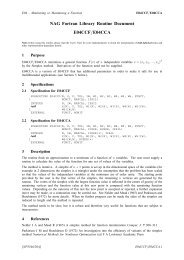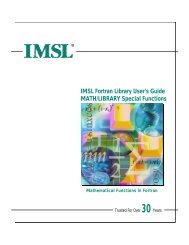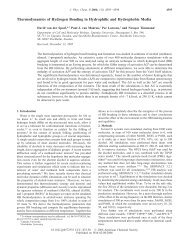Erik Lindahl
Erik Lindahl
Erik Lindahl
Create successful ePaper yourself
Turn your PDF publications into a flip-book with our unique Google optimized e-Paper software.
Lipid diffusion<br />
• Frequently overestimated by an order<br />
of magnitude due to layer c-o-m motion!<br />
• Can be corrected after simulations too, though<br />
J. Chem. Phys., Vol. 115, No. 10, 8 September 2001 NMR relaxation in lipid bilayers<br />
4943<br />
vesicle tumbling or collective effects. We have derived analytical<br />
corrections for these contributions in appendix A, but<br />
none of the alternatives produce an asymptotic 1/ behavior.<br />
The proposed frequency dependence thus seems to be a<br />
good phenomenological model for the relatively limited frequency<br />
range covered by NMR experiments and mainly<br />
caused by the nonexponential relaxation from chain isomerization,<br />
but it would be quite puzzling if it persists to much<br />
lower frequencies in future measurements. In the opposite<br />
limit of high frequencies, simulations can access much<br />
higher regions than NMR experiments. Since the decay of<br />
the correlation function is strongly nonexponential even at<br />
short times, the calculated NMR relaxation rate does not approach<br />
a finite nonzero value in the limit of very high frequencies.<br />
On the contrary, it continues to zero.<br />
10 ns 100 ns MSD (10x slower than H2O)<br />
B. Lipid translational & reorientational diffusion<br />
FIG. 5. Center-of-mass mean square displacement of the lipids solid and<br />
the linear regression dashed. The inset shows probability distributions of<br />
one-dimensional displacements, i.e., diffusion propagators, for motions over


